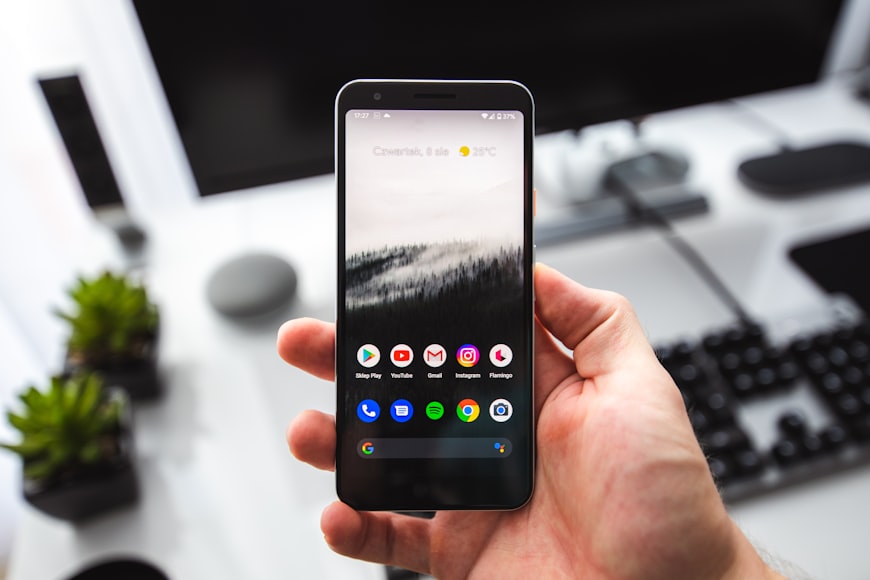Malicious software, also known as Android malware, is a big problem for mobile device users. This type of malware installs on mobile devices using legitimate apps or websites. Once installed, it can steal personal data, send spam text messages, and even hijack phone calls. Developers have to take special measures to make sure their apps are safe from Strandhogg.
There are various ways they can do this, but the most important thing is to use the right security measures when developing an app. This includes testing it on a variety of devices and making sure it’s malware-free before release. By doing this, developers can protect their users from malware and ensure a positive mobile experience.

The Different Types Of Android Malware
Android malware is on the rise, and developers need to take measures to protect their users. There are different types of Android malware, each with its own goals and methods of attack. Some malware targets only specific devices or applications, while others spread through the network like a virus. Developers need to be aware of which malware is being developed on Android and take appropriate measures to protect their users. There are a few basic steps that developers can take to protect their users from malware attacks: first, they should be aware of the different types of malware, and second, they should implement security measures to protect their users from malware.

Android OS Malware
Android OS malware is a big problem, and it’s getting bigger by the day. If you’re using an Android device, it’s important to be aware of the different types of Android OS malware out there and what they can do to your device.
Malware can gain access to your phone in a number of ways, including through phishing attacks or by hijacking apps that you download from the internet. In addition, malicious applications (apps) can also exploit vulnerabilities in older versions of Android that have not been patched yet.
To stay safe on Android devices, make sure to install updates as soon as they are available and keep an eye out for suspicious apps – whether they’re downloaded from the internet. Remember: always use antivirus software and regular security scans to protect yourself!
Trojan Horse Applications
Android devices are a popular target for malware authors, as they offer a wide variety of features and applications that can be used for malicious purposes.
One of the most common types of Android malware is Trojan Horse applications, which allow unauthorized access to your device and steal your personal data. Be especially careful when downloading apps from unknown sources – make sure you only install them from trusted sources! Additionally, always protect your device by installing antivirus software and up-to-date security updates.

Spyware
Spyware is a type of malware that collects information on your online activities and transmits it to a remote location. This can be used for criminal purposes, such as identity theft or fraud.
There are different types of spyware – tracking software, browser hijackers, etcetera. Developers need to be aware of the different types of malware and develop strategies to protect their apps and devices from it.
How Do Developers Protect Themselves From Android Malware?
Keeping your Android device malware-free is essential if you are a developer. Here are some ways that developers protect themselves:
- Install security patches on their Android devices.
- Use app scanning tools to check for malicious apps before they are installed on users’ phones.
- Create virus-free environments for their applications using sandboxing software.
- Keep up with the latest trends in malware protection to stay ahead of the curve.
Use A Security App
Keeping your device and personal information safe is essential, especially when it comes to the content shared online. One way to do this is by using a security app. By installing the app on your phone, you can be sure that all of your device’s activities are monitored in real-time.
Apart from keeping your device up-to-date with the latest security patches, it is important that you avoid downloading files from suspicious sources. Make sure you only share what’s necessary and don’t post anything that could jeopardize your safety or privacy. Regarding social media platforms, be cautious about what kind of content you share as much as possible – think twice before clicking “share” on articles or posts!
Install An Anti-Virus App
It is important for developers to install an antivirus app on their devices. Not only will this help protect them from malware, but it will also keep the device clean and virus-free. By following these simple tips, you can ensure that your device remains secure and infection free.
Update Your Software Regularly
Updating software is an essential part of computer security. Developers need to keep their software up-to-date in order to avoid malware threats and other risks. In addition, make sure you are using the latest security patches and avoid downloading unsolicited apps. Be especially vigilant when browsing the internet – use a safe browsing extension or add-on to stay protected from viruses and malware attacks. Finally, keep your computer locked down so that unauthorized users cannot access sensitive information or steal your personal data.
Protect Your Phone With A Password And PIN
Keeping your phone safe is important – not just because it contains personal information but also because malware can damage your device and steal valuable data.
When it comes to passwords and PINs, both developers and users tend to use a variety of methods. Some prefer long, complex passwords, while others opt for easy-to-remember PINs. However, no matter what you do, make sure that they are always kept safe and never shared with anyone else.
Furthermore, use a security app to scan your device for any malicious apps or viruses before installing anything new. Finally, be alert about how you use your phone – don’t download anything from an unknown source or click on unsolicited links in email messages.
Back-Up Your Data Regularly
Data backups play an important role in ensuring that your business’ data remains safe and unaffected by any eventual accidents or malware attacks.
To be effective, a backup should include not only your company’s data but also the information of any third-party apps you are using. It is vital to have regular backups so you can recover from anything – no matter how big or small the incident might be. Make sure to install security apps on your devices as well; this will help keep you protected from malicious software infections. Furthermore, stay informed about Android malware threats so you can take appropriate precautions when it comes to personal safety and device security.
Conclusion
Android malware is a widespread problem that developers need to take seriously. By understanding the different types of Android malware and how developers protect their apps from them with the help of Appsealing, you can be sure that your device is safe from malicious software. Make sure to stay up-to-date with the latest malware threats and download apps from trusted sources to protect yourself and your device.









